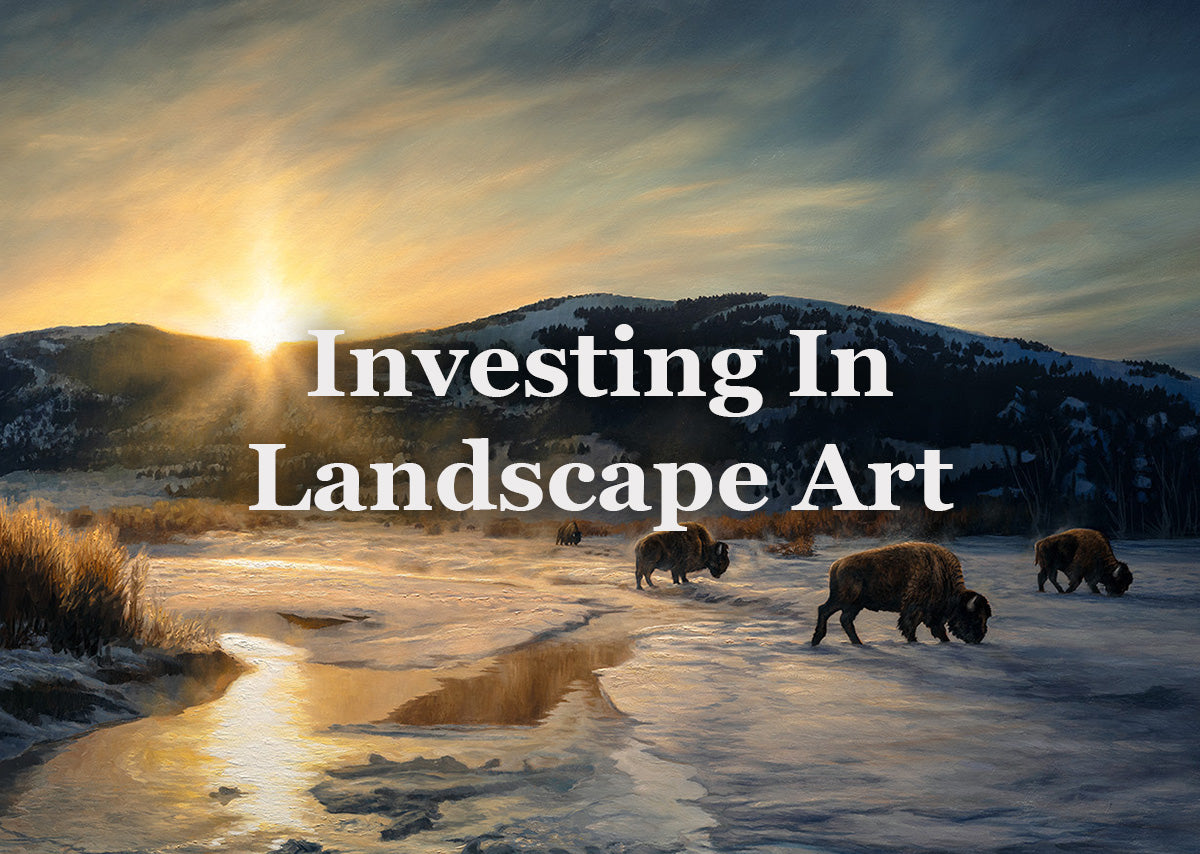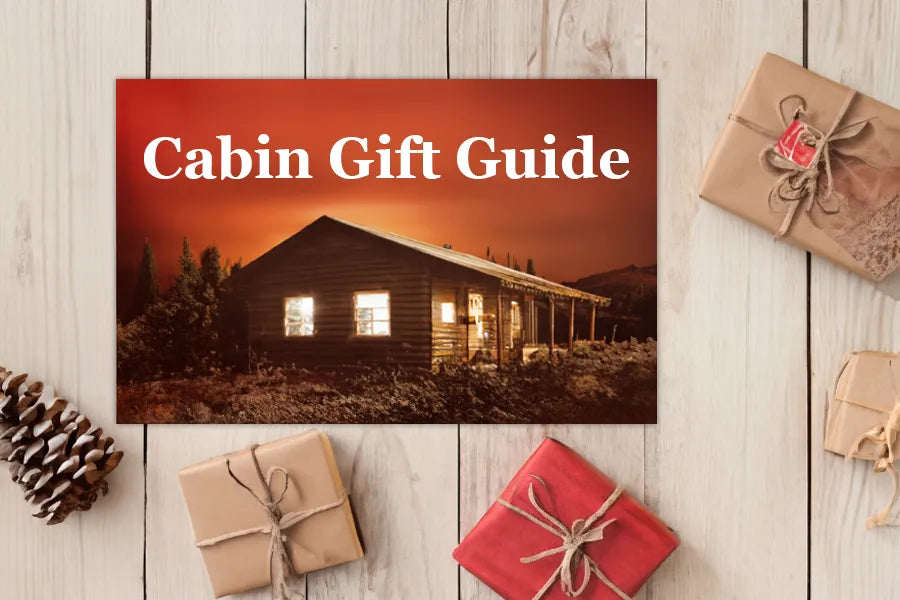This blog is supported through the affiliate links below
Starting Your Art Career: A Guide to Selling Your Art and Becoming a Full-Time Artist
Whether you're an artist looking to sell their first drawing or have been selling your paintings for years, but are looking for ways to go full-time, this article is for you. I think the easiest way to go about this is to break it into two parts. First, we'll go over the basics and then I'll walk you through the things I think are the most impactful for marketing your art in today's world.

Note: This blog contains affiliate links and purchasing through them supports our site at no extra cost to you.
The basic steps for marketing artwork
If you're an artist just starting out and looking to sell your original artworks and prints, there are a few basic steps you can take to market yourself both locally and online:
-
Develop your portfolio: Create a body of work that you can use to showcase your talent and style to potential buyers. Consider creating a website or online portfolio to share your art with a wider audience if you haven't already. This part can take years, but it's the most important. When growing your portfolio of works you should always stay true to yourself so that your unique style comes out in your art.
-
Tell Stories: I often tell people that without the story, there is no painting. That is genuinely true for my art and the way I create and I encourage you to ask yourself why you create. Great artwork goes deeper than the what's seen at the surface and buyers inheritably understand this even if they're not aware of it. So talk about your art and write it down so that others can develop a deeper connection with your artwork.
-
Network with other artists: Join local art groups or associations, attend art fairs and exhibitions, and connect with other artists to learn about opportunities and gain exposure. Even if this leads you no where, the experience of putting yourself out there will be helpful in the long run.
-
Use social media: Utilize social media platforms such as Instagram, Facebook, YouTube (shorts), and TikTok to promote your art and connect with potential buyers. Short form vertical video is now a large part of all these platforms and what I consider to be the best way to get organic reach. Brainstorm ways you can create 15-30 sec videos showcasing your art and start sharing to all these places. Mix in photos when you have something important to share and don't water down your feeds with too many posts that your followers don't necessarily need to see.
-
Create a website: This one is a no-brainer. If you are serious about selling your art then you need a website of your own and one that's capable of sales.
-
Create a mailing list: Growing your email list is the single most important aspect of growing an online business. Gather names and emails in every place you can. Use the mailing list to tell your stories about your art, share the works you create, and update your subscribers with what's for sale from time to time.
-
Look into online marketplaces: Consider selling your art on online marketplaces such as Etsy, Facebook, Instagram, etc. Even if you sell a lot on your website, it never hurts to add sales channels. Platforms like Instagram have come a long ways in their seller features, so do some research into what all your options are.
-
Learn about SEO (search engine optimization) and Google Analytics: This is an important piece of marketing online. To be found by potential customers on the internet, it's important to optimize your website and social media pages with relevant keywords and meta tags, this will help you rank higher on search engine results. Understanding the analytics and metrics of your website and social media pages will give you insights on how to improve your online presence.
-
Offer commissions: Offer to create custom artwork for individuals, it's a great way to build a loyal customer base and increase your income.
-
Be professional: Always present yourself professionally, whether in person or online, and be responsive to inquiries and requests in a timely manner. Good communication between your followers, collectors, and anyone who reaches out with a question is vital.
-
Be consistent: Keep creating and sharing your art regularly, and be consistent in your messaging and branding. This will help you to build a loyal following and establish a recognizable style.
-
Believe in yourself: Building a successful art career takes time and persistence. It's important to believe in yourself and your art, and to keep working towards your goals. I've been working at my own art career for 20 years and it still feels like a grind and that I haven't "arrived" yet, but I love what I do so I push on. I think there's a lot of power in good vibes and determination.

So, what should I focus most of my energy on?
The three things that I think are most important are your website, email list, and social media and here's why:
We live in a digital world now, and many art collectors seek to buy from artists online. Having a website is critical if you are looking to succeed in selling art in 2023 and beyond.
Creating a website for your artwork is a great way to showcase your portfolio, share your story, connect with potential art collectors, and expand your reach.
Here are a few things to keep in mind when creating your first website:
-
Choose a user-friendly platform: There are several platforms that are easy to use for creating a website such as Wix, Squarespace, and Weebly. These platforms offer a variety of templates and drag-and-drop features that make it easy to create a website without any coding knowledge. They also offer different pricing plans that may suit your budget.
-
Optimize for mobile devices: With the majority of internet users accessing the web on their mobile devices, it's important to ensure that your website is optimized for mobile viewing. This will ensure that your website is easy to navigate and view on any device.
-
Showcase your portfolio: Your website should include a portfolio of your artwork that is easy to navigate and view. Make sure to include high-quality images of your art, as well as descriptions and prices if you plan to sell your work. It's essential that your buyers should be able to purchase your art without contacting you first, so have an online store as a part of your site and choose a hosting platform that has e-commerce.
-
Use SEO techniques: Optimize your website with relevant keywords and meta tags to increase its visibility on search engine results pages, this will help you to be found by potential customers. There are plenty of resources out there to help you learn and understand this aspect, so do some research.
-
Keep it simple: So often do I see artists who create complex websites with all sorts of bells and whistles; this is not needed. Your website needs to be fast and easy to navigate which any add-ons will hamper. Try to keep your site clean and focus more on showcasing your work and what you offer. There's no special trick that will make your website sell lots of art; your buyers only care about you and your work.
In terms of the platforms, Wix and Squarespace are user-friendly and offer a wide range of templates and e-commerce options. They also offer a variety of pricing plans that may suit your budget. Weebly is also user-friendly, it's a bit more affordable, but it may have a bit less features than the other two. The choice of the platform will depend on your budget, your needs and your experience with website building.

What about Shopify?
Shopify is a popular e-commerce platform that can be used to create a great, professional looking online store for your artwork. It's relatively easy to set up, but it does require a bit more technical know-how than platforms like Wix or Squarespace. Here are a few things to keep in mind when considering Shopify for your art website:
-
Shopify is designed specifically for e-commerce, so it's well suited for artists who plan to sell their work online. It offers a wide range of features such as shopping cart, payment gateway, and inventory management.
-
Shopify provides a variety of customizable templates, but you may need to have some basic coding knowledge to fully customize your website.
-
Shopify offers a variety of apps and plugins that can add additional functionality to your website such as email marketing, social media integration, and analytics.
-
Shopify has a more robust set of e-commerce tools and analytics than other platforms, it also allows for more customization options, but it may be more expensive than other platforms. You can always try their 14 day trial to test the waters.
-
Shopify has a strong customer support team and a large community of users, so you can always find help and resources if you need it.
Shopify is a great option for artists who want a more powerful e-commerce platform with more customization options. It's worth considering if you're planning to get serious about selling your art online and if you're willing to put in some extra time to set up and customize your website. This platform might be best for the artist who already has experience selling online, but is looking to upgrade and grow their business.

Email marketing and why it's important
Email marketing is absolutely essential despite how old and outdated you might think emailing is. Email lists are an effective way to connect with your audience and promote your art. You also own your list of contacts and emails which is super important because you can't say the same thing about your follower list on social media. If something happens and you lose all your accounts on social media, you'll still have your email list that you can take anywhere in the future. It's a direct line between you and your customers.
Here are a few steps to get started with creating an email list:
-
Collect email addresses: Collect email addresses from visitors to your website, art fairs, and other events, as well as from people who engage with your social media accounts.
-
Use lead magnets: Offer a lead magnet such as a discount, or free art print to entice visitors to subscribe to your email list. It could even be an exclusive perk such as, "sign up to be the first to know about new art for sale."
-
Choose an email list hosting platform: There are several platforms that you can use to host your email list, such as Mailchimp, Constant Contact, and Convertkit. Each platform has its own set of features and pricing plans.
-
Mailchimp is a popular and user-friendly platform that offers a free plan for lists with fewer than 2,000 subscribers. It also offers a wide variety of templates and tools for creating and sending email campaigns.
-
Constant Contact is geared towards small businesses, it has a user-friendly interface and also offers a wide variety of templates and tools for creating and sending email campaigns.
-
Convertkit is a more advanced email marketing platform that is designed for professional bloggers, authors and creators. It's more affordable than other platforms and offers a variety of features such as automation and tagging.
-
Create a sign-up form: Create a sign-up form on your website and social media platforms that allows visitors to subscribe to your email list. These platforms I just listed have the tools to easily create one.
-
Create engaging content: Once you have an email list, use it to send engaging and relevant content to your subscribers, such as updates on your art, upcoming events, and exclusive offers. Treat your email newsletter similar to a blog and talk about your art. Don't just try and sell to your subscribers, bring them along for the journey and write stories.
-
Automated emails: Setup an automated welcome sequence where a new subscriber will get a series of a few emails over a week or so. Use this opportunity to welcome your new subscriber, educate them on what you do, show them who you are, and what you stand for as an artist.
Doing all of this might seem a little complicated, but don't worry, it's not too bad once you familiarize yourself with the platform you're using.

Marketing your art with social media
None of what I just went over really will work out for you unless you have a presence on social media across as many platforms as you can handle. Social is what will drive most of the traffic you receive and it's important to know how to use it.
Now, I'm not going to give you any secrets or tricks to hack social media because frankly, there are none. The key to success on social is to post really high-quality content and be willing to adapt with the platforms. I think it's always a good rule to trust the social platform before yourself. At the end of the day, these companies are looking out for the life of their platform and how to better it. They know best even if you don't think so.
A great example is how Instagram switched priority to reels over photos and creators on the platform who share mostly still images (like paintings) were upset and angry. However, those who embraced the change and began brainstorming ways to share their work through short video form saw huge success. Myself personally went from 40k followers over 5 years of posting pictures of my work to 218k followers in just one years time after I began posting to reels.
So the moral of the story is to not overthink social and go with the flow. The quality of your art and the message you share is what's most important for success on social media.
Hopefully by now you have a better understanding of what you can do to make this year the year that you sell your first piece of art or the year you grow your art business. Remember that there is no secret to any of this and execution is the only way to the top. You'll learn as you go which is the only way and failure will become the catalyst to how you find success. So enjoy the process and keep creating!
Grow Your Painting Skills and Resources
Instant access to 1000s of royalty-free reference photos of landscapes and wildlife as well as step by step oil painting videos. Checkout My Memberships for more info.

I'm Chuck Black, landscape and wildlife artist based in Southwest Montana.






